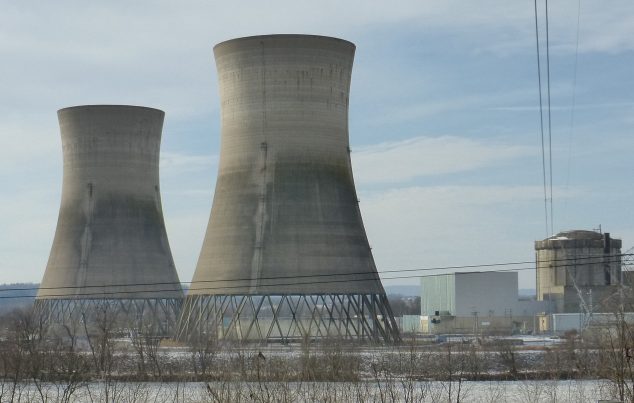
Experts warn that shutting down nuclear plants would “negate” efforts to transition to clean energy
Thursday, August 23, 2018 by Edsel Cook
http://www.realsciencenews.com/2018-08-23-shutting-down-nuclear-plants-would-negate-efforts-to-transition-to-clean-energy.html

A report funded by a pro-nuclear group claimed that the impending closure of old nuclear power plants in Pennsylvania and Ohio will be a big blow against air quality in the region. In a report from The Pittsburg Post-Gazette, the nuclear facilities would be replaced by natural gas plants that produce more air pollution.
The report was conducted by the Brattle Group, an economic consultancy company that was hired by Nuclear Matters to bring up the environmental consequences of closing the nuclear plants.
Most attempts to preserve the soon-to-retire facilities have focused on economic impacts and job losses. The Beaver Valley Power Station in Shippingport, Pennsylvania is run by 800 workers while the infamous Three Mile Island facility employs nearly 700 permanent workers.
The environmental aspect was previously neglected because proposed rescue plans for the threatened nuclear power plants also involve saving coal plants. Environmentalists who would have happily supported relatively clean nuclear power balk at having to protect dirty coal as well.
Study claims nuclear power provides near-irreplaceable amounts of clean energy
Nuclear power plants do not emit carbon dioxide and other air pollutants during their operation. This puts them in roughly the same league as solar panels and wind turbines, the poster children of renewable energy.
In 2017, the four nuclear power plants produced 39 million megawatt-hours of energy. The Brattle Group report said this was 1.5 times the amount of solar and wind energy produced in the PJM regional electric grid during that year.
By 2021, the last of these power plants will be closed down. The report claimed that the power loss would exceed all the renewable energy that have been installed in the 13-state PJM Interconnection transmission region over the last 25 years.
Furthermore, given the current rate of renewable energy expansion in the PJM region, the study said it would take 32 years for renewable energy sources to make up for the loss of the four nuclear plants.
To make up for this huge deficit, the likeliest source of additional electrical power will be natural gas. The fossil fuel has become the main source of electricity generation in the U.S. due to the low cost and abundant supply of natural gas from shale fracking operations.
Natural gas power plants emit 50 percent less air pollution than their coal counterparts. The combination of these somewhat cleaner fossil fuels and emission-free renewable energy have been credited with the significant improvement of air quality in Pennsylvania and the rest of the U.S.
Nuclear proponents aren’t befriending environmentalists, natural gas
An even more unlikely alliance between the oil and gas industry, manufacturers, and the AARP are opposing any bailout plans for the retiring nuclear plants. They said that the Brattle Group report did not consider the vast strides made by the renewable energy sector in reducing the cost of utility-scale clean energy. They also added that renewable energy has become much cheaper than nuclear power.
Pro-nuclear groups shot back that natural gas was to blame for the rise of carbon emissions in the power sector. The environment benefited if a natural gas plant replaced a dirty coal plant, but it suffered if an emission-free nuclear plant got replaced.
Their argument has not seemed to move Pennsylvania’s legislators. Local legislators have not introduced any bill to bail out the five nuclear plants in the state.
The state’s environmental groups are not very keen on helping out nuclear operators because the latter insist that any intervention should also benefit coal power. Environmentalists are also wary of the risks and consequences of a nuclear accident.
Keep an eye on warning signs about the nuclear industry at Nuclear.news.
Sources include:
Tagged Under: Tags: Air pollution, badpollution, Clean Energy, economics, economy, environment, nuclear energy, nuclear power, nuclear power plants, Pennsylvania, renewable energy





